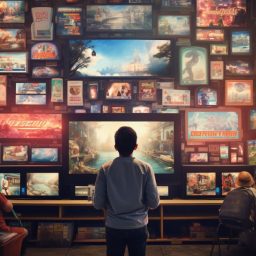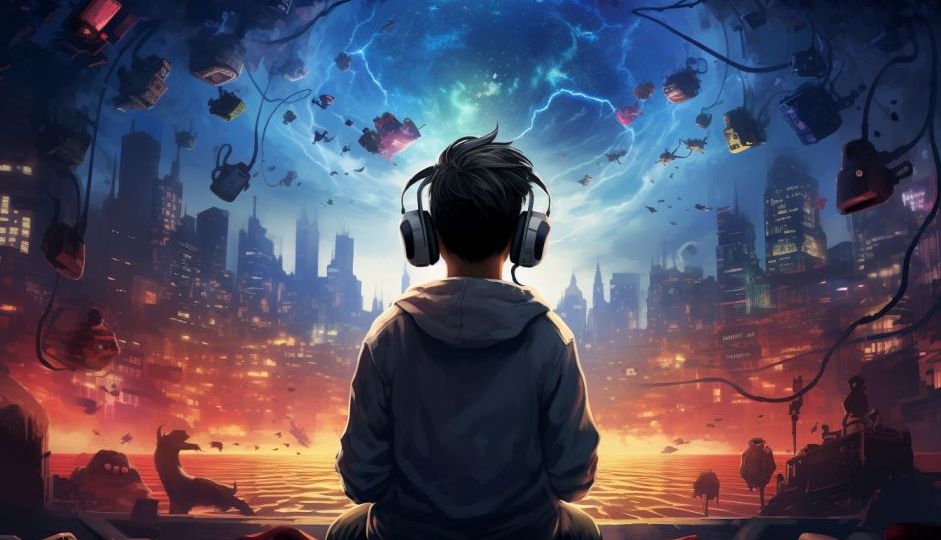
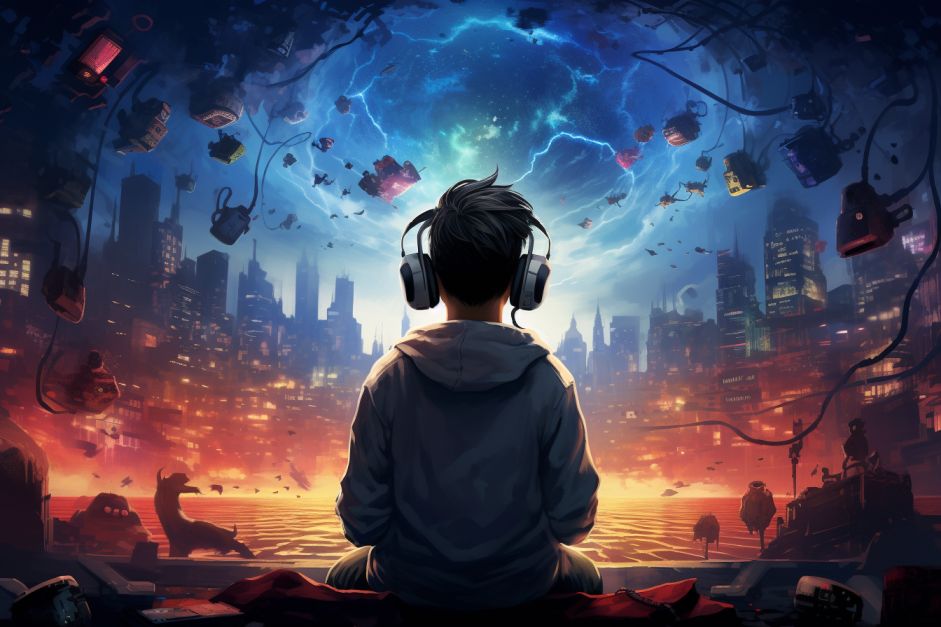
Video games have taken the world by storm! The gaming industry, in just over 50 years since the introduction of the first game Pong in 1972, managed to outgrow in revenue movies and music combined.
While there are many factors that contribute to games’ mass appeal, such as their entertainment value, immersive stories, competitiveness and community, it cannot be denied that if the games were not to be translated it wouldn’t be possible for them to reach gamers all over the world. Let us have a look at some of the most popular games and what can we learn about theirs localisations.
Contents
Which are the most popular video games in the world in 2023?
Determining the single “most popular” game in the world can be challenging, because popularity can be measured in various ways, such as player base, revenue, sales, cultural impact, or concurrent players. Additionally, the popularity of games changes over time. However, it can be safely assumed that it is one of the ongoing live-service online games, where players compete against themselves.
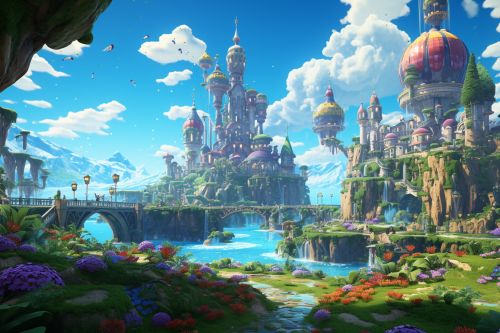
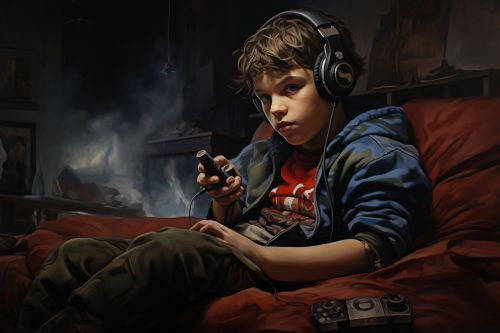
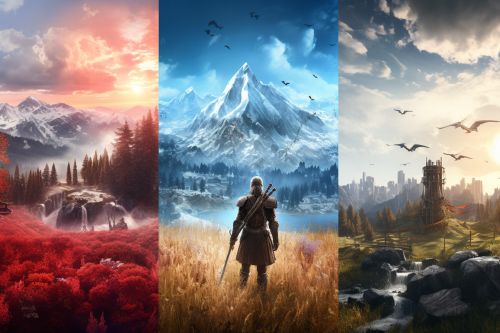
Some of the games that have been widely considered among the most popular include:
- Minecraft – Developed by Mojang Studios and released originally in 2009, Minecraft is renowned for its open-world sandbox gameplay with almost endless possibilities for the players to build and create. The game has a vast and dedicated player community. It achieved remarkable success across various platforms and sold over 300 milion copies. At the time of writing, Minecraft was available in 128 languages, making it one of the most accessible games in history. Unfortunately, translators weren’t listed in the credits, so it is hard to share more on the process.
- Fortnite – An immensely popular third-person battle royal shooter, has its players compete on a constantly shrinking battle arena to be the last man standing. Developers from Epic Games created an engaging gameplay loop complemented by cartoon graphics, which appeal to many younger players. The video game is distributed in a free-to-play model, peaking with over 6 million players. Fortnite can be played in English, Arabic, German, Spanish (Spain), Spanish (Latin America), French, Italian, Japanese, Korean, Polish, Portuguese, Russian, Thai, Turkish, simplified Chinese, and traditional Chinese. The localisations were handled in-house.
- League of Legends – A highly popular free-to-play multiplayer online battle arena (MOBA) game by Riot Games, with a massive esports scene. League of Legends has a significant global player base, with peak player counts around 10 million players each month. League of Legends‘ translations were handled in-house and the game supports the following languages: English, Spanish, French, German, Italian, Portuguese (Brazil), Polish, Czech, Greek, Hungarian, Romanian, Russian, Turkish, Arabic, Japanese, Korean, simplified and traditional Chinese.
- Counter Strike – A competitive first-person shooter and one of the most recognisable among PC games. It started out as a modification to 1999’s Half-Life by Valve. Since 2004 the title is developed by Valve, who released 2004’s Conter Strike: Source and 2012’s Counter Strike: Global Offensive. In September 2023 CS: GO has been greatly overhauled and renamed Counter Strike 2. The game is the most popular game on Valve’s digital game distribution platform – Steam, and averages around one million players each day. The newest version is available in 28 languages
- Call of Duty franchise – Call of Duty is a series of AAA (big budget, high profile video games) first-person shooters published by Activision. The series follows a yearly release cycle, with games’ iterations being developed by one of Activision’s studios i.e. Infinity Ward, Treyach, Sledgehammer Games. Alongside mainline entries, ongoing live-service titles such as Call of Duty: Warzone and Call of Duty: Mobile enjoy huge popularity. While it is difficult to gauge series player counts, since it releases on various platforms, which don’t always share their numbers, one is certain – every year around November a new Call of Duty game tops sales charts. The newest entry in the series is available in 15 languages, 11 of which include fully localised voice-over.
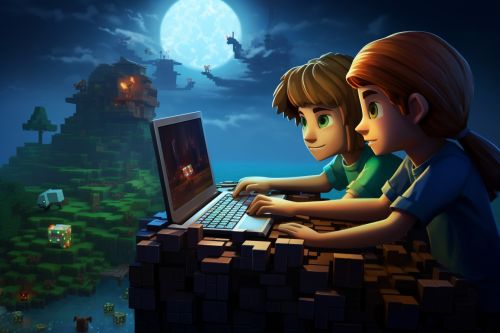
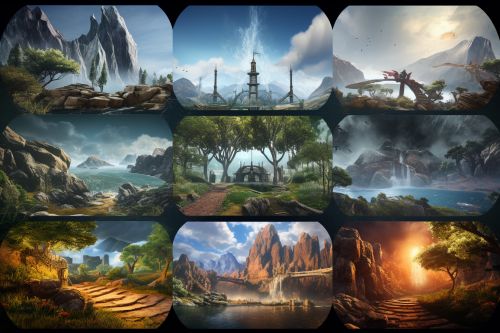
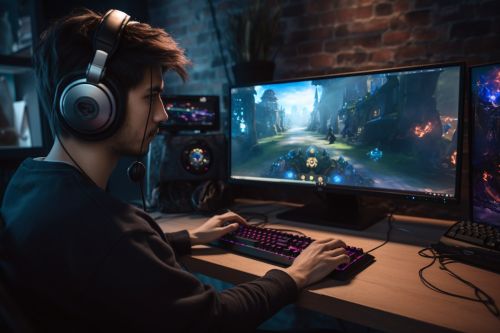
Which games had the most commercial success?
Looking at player counts is only one way to judge how popular a video game is. Live-service and mobile games aren’t the only ones enjoying commercial success, and a video game can also be judged by how many copies it has sold. here’s a list of best-selling video games in the history of the industry.
10. Overwatch – 50 million
Developed by Blizzard Entertainment team-based first-person shooter (FPS) was officially released on May 24, 2016, for Microsoft Windows, PlayStation 4, and Xbox One. The game later became available for the Nintendo Switch. Overwatch is known for its colourful and diverse cast of characters, each with unique abilities and play styles. It supports multiple languages, including English, Spanish, French, German, Italian, Russian, and others.
9. The Witcher 3: Wild Hunt – over 50 million
The Witcher 3, developed by CD Projekt RED, is an acclaimed action role-playing game released in 2015. Set in an expansive open world, players control Geralt of Rivia, a Witcher, navigating a deep narrative filled with choices, engaging in challenging combat, and exploring a richly detailed fantasy realm. The game received widespread praise for its storytelling, world-building, and character development, winning numerous awards and spawning two expansions. The Witcher 3 can be played in multiple languages, with localisations including full translated voice-overs.
8. Red Dead Redemption 2 – over 55 million
Red Dead Redemption 2, developed by Rockstar Games, is an expansive Wild West open-world action-adventure game released in 2018. Set in the late 1800s, players follow Arthur Morgan, an outlaw and member of the Van der Linde gang, as they navigate a meticulously crafted Wild West landscape. The game, praised for stunning visuals, immersive storytelling, and complex characters, offers intense gunfights, exploration, and a robust honour system shaping the story. Available in multiple languages, including English, Spanish, French, German, Italian, Russian, and more, Red Dead Redemption 2 received critical acclaim for its narrative depth, realistic world, and attention to detail.
7. The Elder Scrolls V: Skyrim – over 60 million
Released by Bethesda Game Studios in 2011, The Elder Scrolls V: Skyrim is an open-world action role-playing game. Set in the fantasy realm of Tamriel, players assume the Dragonborn’s role, a prophesied hero with the ability to use dragon shouts. The game is renowned for its vast, detailed world, dynamic quests, and freedom of choice, allowing players to shape their character’s destiny. Skyrim supports multiple languages, including English, Spanish, French, German, Italian, Russian, and others, enhancing its accessibility for a global player base. The game’s extensive modding community has contributed to its enduring popularity, providing players with a variety of user-generated content and enhancements.
6. Mario Kart 8 Deluxe – 63.92 million
Mario Kart 8 Deluxe, developed by Nintendo, is a popular kart racing game released for the Nintendo Switch in 2017. An enhanced version of Mario Kart 8, it features iconic characters from the Mario franchise racing on vibrant tracks filled with obstacles and power-ups. Players can compete against each other in local or online multiplayer modes. Known for its accessible gameplay and family-friendly design, Mario Kart 8 Deluxe has become a staple for casual and competitive gamers alike. The game supports multiple languages, including English, Spanish, French, German, Italian, Japanese, and others, ensuring a broad international appeal. With its engaging races and timeless characters, Mario Kart 8 Deluxe remains a beloved title on the Nintendo Switch platform.
5. PUBG (PlayerUnknown’s Battlegrounds) – 75 million
PlayerUnknown’s Battlegrounds, commonly known as PUBG, is a battle royale game developed and published by PUBG Corporation. Released in 2017, it quickly gained popularity for its intense and competitive gameplay. In PUBG, 100 players parachute onto an island, scavenge for weapons and equipment, and battle to be the last person or team standing. The game’s expansive maps and realistic graphics contribute to its immersive experience. PUBG is available in multiple languages, including English, Chinese (simplified and traditional), Korean, Japanese, Russian, and more, making it accessible to a global audience. The game’s success has led to the development of various versions and adaptations, including PUBG Mobile and PUBG New State, maintaining its influence in the battle royale genre.
4. Wii Sports – 82.9 million
Wii Sports, developed by Nintendo, is a sports simulation game that was bundled with the Nintendo Wii console upon its release in 2006. The game utilizes the Wii’s motion-sensing controls, allowing players to physically mimic the actions of sports such as tennis, baseball, bowling, golf, and boxing. Known for its accessible and family-friendly gameplay, Wii Sports became a cultural phenomenon and played a crucial role in popularizing motion-controlled gaming. The game is available in multiple languages, including English, Spanish, French, German, Italian, and Japanese, contributing to its widespread appeal. Wii Sports remains one of the best-selling video games of all time and is celebrated for its innovative use of motion controls in gaming.
3. Grand Theft Auto V – over 185 million
Grand Theft Auto V (GTA V), developed by Rockstar Games, is an open-world action-adventure game released in 2013. Set in the fictional state of San Andreas, players follow three criminals—Michael, Trevor, and Franklin—in their pursuit of success in a crime-ridden world. The game features a vast and detailed open world, a compelling narrative, and a dynamic multiplayer mode called Grand Theft Auto Online. Available in multiple languages, including English, Spanish, French, German, Italian, Russian, and more, GTA V has achieved widespread acclaim for its immersive storytelling, realistic characters, and the sheer scale of its virtual world. It remains one of the most influential video games of all time, with a lasting impact on the gaming industry.
2. Minecraft – over 300 million
Minecraft, created by Mojang Studios, is a sandbox game that allows players to build and explore virtual worlds made up of blocks. Released in 2011, the game offers a unique blend of creativity, survival, and adventure. Players can mine resources, craft tools, and construct structures in various game modes. Minecraft supports a multitude of languages, including English, Spanish, French, German, Italian, Chinese, Japanese, Russian, and many more, making it highly accessible globally. Known for its open-ended gameplay and pixelated, retro-style graphics, Minecraft has become a cultural phenomenon, appealing to players of all ages. Its popularity has led to various adaptations, including educational versions, and it remains one of the best-selling video games of all time.
1. Tetris – 520 million
Tetris, created by Alexey Pajitnov in 1984, is a classic puzzle video game with enduring popularity. The game involves fitting falling blocks of different shapes together to form complete horizontal lines, which then disappear. Originally developed in the Soviet Union, Tetris has been released on a wide range of platforms over the years. Its simple yet addictive gameplay and iconic music have made it a cultural phenomenon. Tetris is available in numerous languages, reflecting its global appeal, and it has become one of the best-selling video games of all time. Its influence extends beyond gaming, contributing to the development of the puzzle genre and remaining a symbol of timeless, straightforward game design.
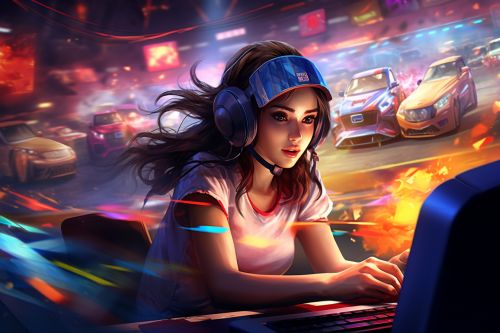
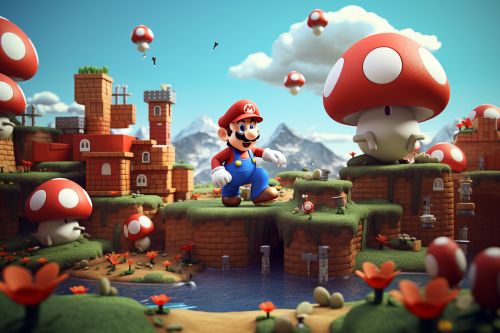

Noteworthy mentions
Some other video games that didn’t make the top 10 list, but were hugely successful:
- Super Mario Bros (Nintendo)
- Dota 2 (Valve)
- Among Us (InnerSloth)
- Apex Legends (Respawn Entertainment)
- The Legend of Zelda: Breath of the Wild (Nintendo)
- Super Mario Odyssey (Nintendo)
- The Last of Us (Naughty Dog)
- God of War (Sony Santa Monica Studio)
- Cyberpunk 2077 (CD Projekt)
- FIFA series (Electronic Arts)
- Resident Evil (Capcom)
- Diablo (Blizzard)
Why localise video games?
Localising a game into different languages is a crucial aspect of reaching a broader and more diverse audience. By adapting the game’s content, including text, audio, and culturally specific elements, to different languages, developers can enhance the overall gaming experience for players worldwide. This process helps break down language barriers, making the game more accessible and enjoyable for individuals who may not be fluent in the original language. Effective localisation can also foster a deeper connection between players and the game by ensuring that the narrative, humour, and cultural references resonate appropriately. Moreover, it opens up new markets and increases the game’s global appeal, potentially leading to greater commercial success. Overall, game localisation is a strategic move that promotes inclusivity, cultural sensitivity, and a more immersive experience for players around the world.



How games are translated?
The exact process and team involved can vary depending on the game development and publishing structure. In many cases, larger game development studios or publishers have dedicated localisation teams or work with third-party localisation companies.
Here’s a general overview of how the translation and localisation process for a video game might work:
- in-house teams: Some game development studios have in-house localisation teams responsible for translating the game into multiple languages. These teams may work closely with the game developers to ensure accurate and culturally appropriate translations.
- localisation companies: Many video game developers choose to collaborate with specialised localisation companies that have expertise in translating and adapting games for a global audience. These companies often employ linguists, translators, and cultural experts to handle the localisation process.
- crowdsourcing: In some cases, game developers may utilize crowdsourcing platforms or engage the gaming community to contribute to translations. This approach can help ensure that the language is authentic and reflects the nuances of different regions.
- community involvement: In some instances, community members may contribute to the translation process. This involvement can include reporting issues with translations or suggesting improvements.
The goal of the localisation process is to make the game accessible and enjoyable for players around the world by providing translations that are not only linguistically accurate but also culturally relevant. This includes adapting humour, references, and other elements to resonate with players in different regions.
Translate your game with Skrivanek
In the dynamic and ever-expanding world of video games, the power of effective translation and localisation cannot be overstated. As gaming experiences transcend borders and cultures, reaching a global audience is paramount for success. At Skrivanek, we understand the intricate nuances of game localisation, ensuring that your masterpiece resonates with players worldwide. Unlock the full potential of your game by offering a truly immersive experience in multiple languages.
Our dedicated team of expert translators stands ready to transform your vision into a global gaming sensation. Don’t just create a game; craft an international adventure that captivates players across diverse linguistic landscapes. Contact Skrivanek today, and let’s embark on this multilingual journey together, breaking down barriers and expanding the horizons of your gaming universe. Your game deserves to be enjoyed by audiences worldwide, and we are here to make that vision a reality.
Images generated by AI.





